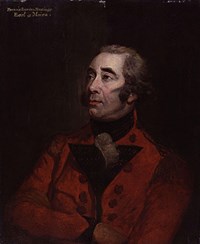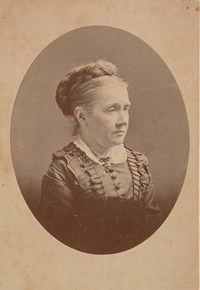- Golden Gate National Recreation Area (51)
- Alcatraz Island (47)
- Boston African American National Historic Site (35)
- Boston National Historical Park (25)
- National Mall and Memorial Parks (14)
- Andersonville National Historic Site (13)
- Belmont-Paul Women's Equality National Monument (13)
- Boston Harbor Islands National Recreation Area (11)
- Women's Rights National Historical Park (11)
- Show More ...
- National Heritage Areas Program (7)
- National Register of Historic Places Program (7)
- National Historic Landmarks Program (5)
- Wildland Fire Program (4)
- American Battlefield Protection Program (3)
- National Center for Preservation Technology and Training (3)
- Southeast Archeological Center (3)
- Geologic Resources Division (2)
- National Trails Office - Regions 6, 7, 8 (2)
- Show More ...
Showing 511 results for prison reform ...
- Type: Person
Eliphalet W. Jackson
- Type: Person
Clergyman and merchant Eliphalet W. Jackson participated in the abolition and temperance movements and served on the 1850 Boston Vigilance Committee.
Mabini Monuments
- Type: Place

Two monuments to Apolinario Mabini stand along the Asan Beach Trail. Mabini was the Prime Minister and Secretary of Foreign Affairs of the first Philippine Republic from January 23, 1899 – May 7, 1899. When the United States acquired the Philippines from Spain at the end of the Spanish-American War in 1899, Mabini and his followers refused to take an oath of allegiance to the United States and were exiled to Guam.
Anna Arnold Hedgeman (1899-1990)
- Type: Article

This page is part of a six-part series exploring DC current events through Fugazi concerts. Each article shares audio clips of banter in between songs at Fugazi shows, where band members and local activists weigh in on current events in DC & national politics. In this article, they discuss incarceration and gambling.
- Type: Article

The year 2025 marks the 10th year since Honouliuli was designated as a National Monument, cementing it as a unit of the National Park Service. In 2019, Honouliuli National Monument was established as Honouliuli National Historic Site. To celebrate its 10th anniversary as a park, Honouliuli National Historic Site is partnering with over 50 organizations to connect communities to its important history of incarceration of prisoners of war and American civilians.
Pioneer Register
Labor Reforms of the Port Royal Experiment
- Type: Article

Paying wages to the formerly enslaved people served two purposes for the government officials developing the Port Royal Experiment. It helped to provide a solution of where people should live. Wages also began to put cash into the hands of people who had toiled this land for generations. Many sought to use that cash to secure that land for themselves.
The Port Royal Experiment
Series: The Port Royal Experiment
- Type: Article

In the fall of 1861 after the Battle of Port Royal, the US military came ashore around Beaufort and found thousands of now formerly enslaved people in control of the region. The military had no real plan yet for what to do with these people or even their legal status. Newly freed Black South Carolinians were active participants. They demanded access to programs to support labor reforms, land redistribution, quality education, and military service.
The Legacy of the Port Royal Experiment
Land Ownership: An Effect of the Port Royal Experiment
- Type: Person

John Pegram was a career United States army officer and West Point graduate who resigned his commission in 1861 to accept a position in the Confederate army. In the summer of 1861, at Rich Mountain, Virginia, he became the first former US Army officer to be captured by Federal forces when he surrendered his entire regiment. Pegram returned to the Confederate army and served until his death in February 1865.
- Type: Person
Nisbet Balfour was a capable British Army officer, who fought throughout the American Revolution and was hated by patriots in South Carolina for his conduct as commandant of Charleston.
Fort Jefferson
- Type: Place

Fort Jefferson, the largest all-masonry fort in the United States, was built between 1846 and 1875 to protect the nation's gateway to the Gulf of Mexico. During the Civil War, it was used as a Federal prison primarily for Union deserters, though in 1865 three of the Lincoln conspirators were imprisoned within its walls.
- Type: Person

Francis Lord Rawdon, later Francis Rawdon-Hastings, Earl of Moira, was an Irish-Anglo army officer and politician, who served the British empire faithfully from service as a young man throughout the American Revolution through the French Revolutionary Wars, capping his career with a decade as Governor-General of India.
Charles F. Hovey
Site of the Boston Equal Suffrage Association for Good Government (BESAGG) Office
- Type: Place

While originally a civic organization dedicated to social reform, the 1901 Boston Equal Suffrage Association for Good Government eventually shifted its primary goals to focus on women’s full enfranchisement and civic education. As a younger organization, it targeted a broader population for support.
- Type: Article

These four lessons support understanding the significance of Tempe, Arizona-an American World War II Heritage City. Highlights of the first two listed lessons include military training, education, civilian contributions, and volunteerism. The third lesson shares on the Papago Park German prisoner-of-war camp in Tempe, which became well-known for a large prisoner escape. All lessons highlight specific contributions and connect to larger home front themes with primary sources.








